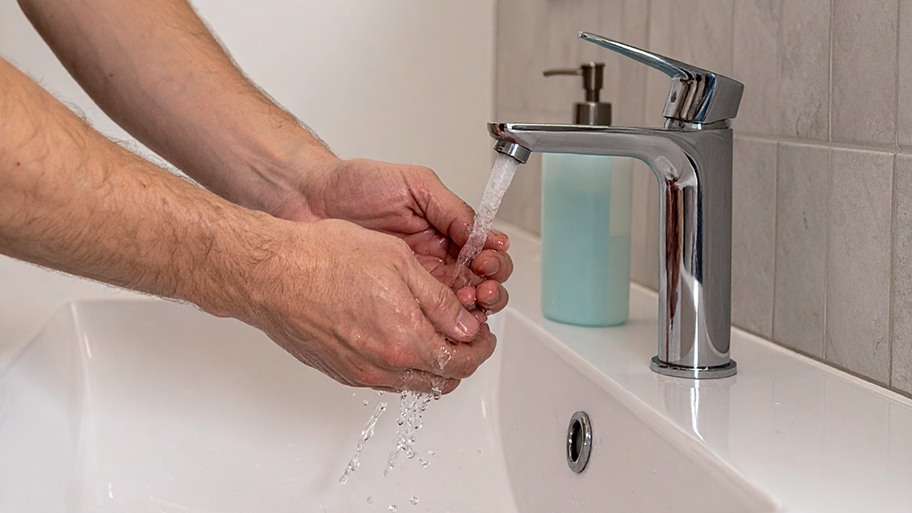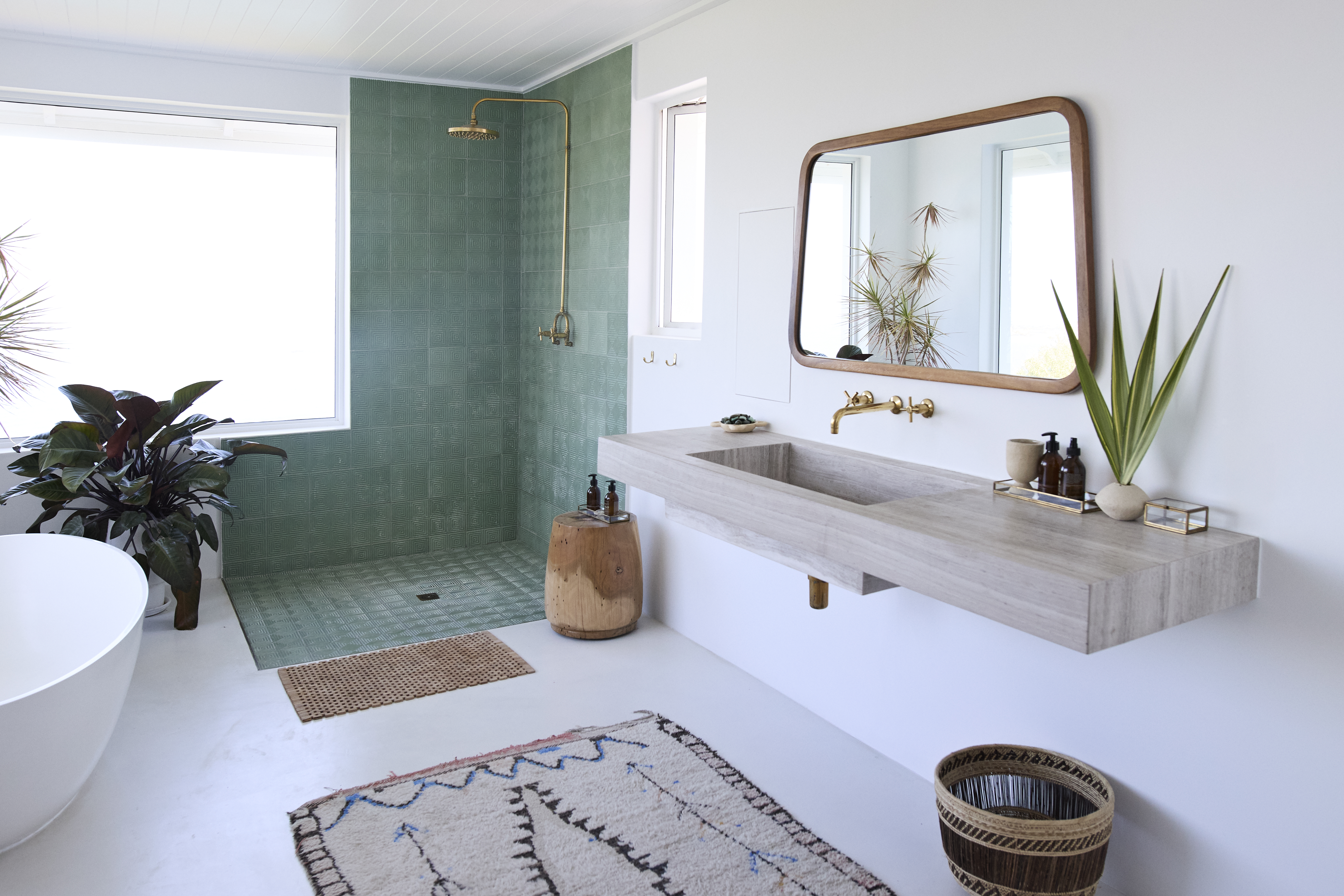
If you need to pump sewage waste uphill to reach a septic tank or street sewer, you may need a dedicated grinder pump. Follow our guide to determine how much a sewer grinder pump costs and any prices that may creep up during the install.
The brass tacks of bathtub plumbing


Bathtub plumbing systems are intricate and essential to your bathroom.
Your bathtub’s piping system is designed to bring clean water to your home and remove dirty wastewater.
Simple bathtub plumbing repairs might be DIY-friendly, but calling in a pro is always a better idea.
Your bathtub’s plumbing is complex and highly important—its efficiency is critical to your personal hygiene, and keeping it in tip-top shape will help prevent leaks and other plumbing emergencies. Learning about all the different parts of your bathtub plumbing system is useful when you need to replace something, call in a repair, or just have stronger working knowledge of your home’s most essential appliances.
Your bathtub’s water supply pipes pull water from your home’s main water line to your bathtub. Your bathtub has two supply pipes—one for hot water and one for cold water—which are connected to a diverter pipe, allowing both lines to come through a single spout. Connected to the hot water line is a cartridge valve, which allows you to control the temperature of your bathtub’s water.

The drain you find at the bottom of your bathtub is known as the wastewater drain—it’s usually below the spout. There are three components to this drain:
Stopper: This plugs the drainpipe so you can fill or drain your tub. It also stops items from falling into the drain and potentially clogging the pipe.
Waste outlet: This pulls wastewater into the sewer.
Traps (or P-traps) are curved sections of pipe located beneath sinks, showers, and bathtubs. They hold a small amount of water that creates a seal, preventing sewer gases from entering your home’s water supply line.

The tub overflow drain does exactly what it sounds like—it prevents flooding in the event that your bathtub overflows. It is usually located on the side of the tub, below the spout. The drain has a faceplate, which is a metal cylinder, and an overflow pipe that connects to the faceplate and diverts excess water to the pipes behind the main drain rather than onto your bathroom floor.
This four-cross pipe connects your water supply, diverter pipe, and drain, allowing water to run from your home’s plumbing system to the different parts of your bathtub.
The water for your bathtub comes out of the faucet. You can control the temperature and water flow using the levers. The four types of bathtub faucets are deck mount, tub-wall mount, wall mount, and freestanding. You can find faucets with different lever types, number of handles, and finishes.

Your bathtub might not have a shower, but shower attachments are becoming increasingly common; bath-shower combinations are great for those with kids or pets. Here are the main plumbing components that make up a shower:
Showerhead: This is where water comes out when you turn your shower on. Showerheads can be attached to the wall or connected with a flexible hose or sliding bar.
Shower control: Also called a diverter valve or shower handle, the shower control is installed between the showerhead and the water supply. It allows you to switch the water’s flow between the bathtub, shower, or—if applicable—hand shower.
Diverter pipe: This pipe sends water from your bathtub spout to the showerhead.
Shower valve: The shower valve lives behind the shower control—like the cartridge valve, it controls the temperature. More expensive valves are pressure-balanced and can prevent extreme temperature changes.
A flexible connector, also called a flexible drain hose, is an alternative to a fixed drainpipe. This pipe connects your tub’s drain to the wastewater system. It’s ideal for installing in hard-to-reach or tight spaces.
Your bathtub also has an emergency shut-off valve. These valves are hidden behind an access panel, which can be located in the bathroom, a room behind the bathroom, or the ceiling of the floor below the bathroom. The valve can be used to shut off water to your bathtub in an emergency, in case of a serious flood or overflow.

To keep your bathtub—and, more broadly, your bathroom—plumbing in excellent shape, you’ll want to be on the lookout for signs of a leak so you can prevent water damage. You might have a plumbing leak if you notice any of the following:
Noticeably higher water bills
Visible mold or mildew around the bathtub
Musty-smelling bathroom
Stained or damaged ceilings, floors, or walls
If you see any of the above, have a local plumber come by to check things out. Generally speaking, it’s wise to go through a plumbing inspection checklist every year to look for anything amiss with your plumbing system.
Finally, place a drain catch over the stopper to prevent hair and other debris from getting into the drain, which can lead to a clog.
If you need to make a repair to your bathroom plumbing, you can try to handle it yourself or call in a professional plumber near you. If the solution is as simple as replacing a visible part, it’s possible that a DIY fix can be done with some elbow grease. If you’re worried about a pipe behind the wall or suspect a leak, however, it is wise to call in an expert who can do a thorough inspection and get to the root of the issue. On average, the cost of a plumbing repair is around $350.
From average costs to expert advice, get all the answers you need to get your job done.

If you need to pump sewage waste uphill to reach a septic tank or street sewer, you may need a dedicated grinder pump. Follow our guide to determine how much a sewer grinder pump costs and any prices that may creep up during the install.

Wondering how much it costs to reroute plumbing? We have the information you need to learn about plumbing vent pipes and cost considerations when installing them.

Repairing a main water line is an urgent matter, so use this guide to get an idea of how much main water line repairs cost to act fast.

What is an anti-siphon valve? Our guide covers what it is, how to install one, and more tips to ensure that your drinking water stays fresh and protected.

Replacing or upgrading plumbing in your home? Make sure you know how to measure pipe size accurately to avoid buying the wrong materials.

Why is sewage coming up in your shower? Learn how to identify the underlying issue, what to do about it, and when to call a pro.